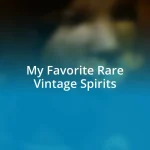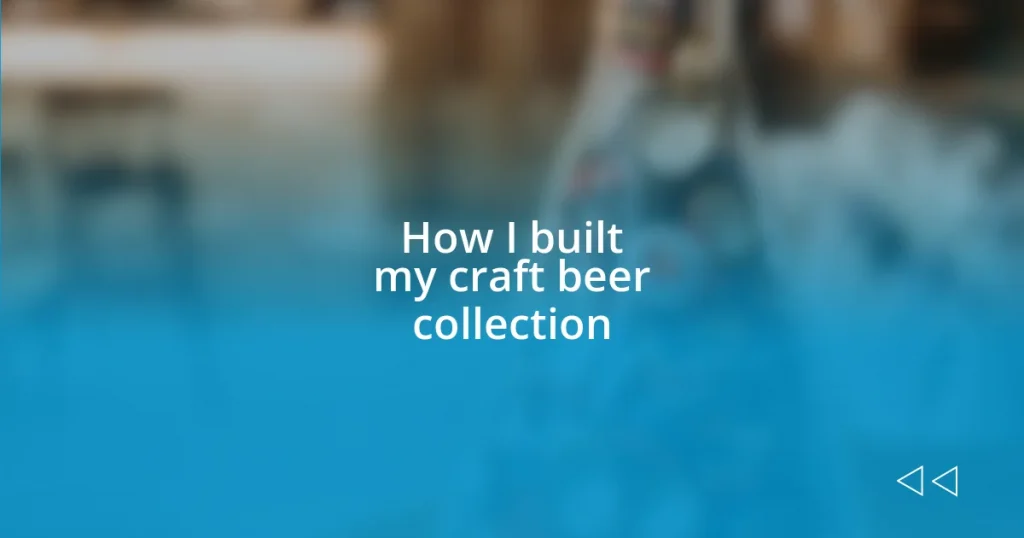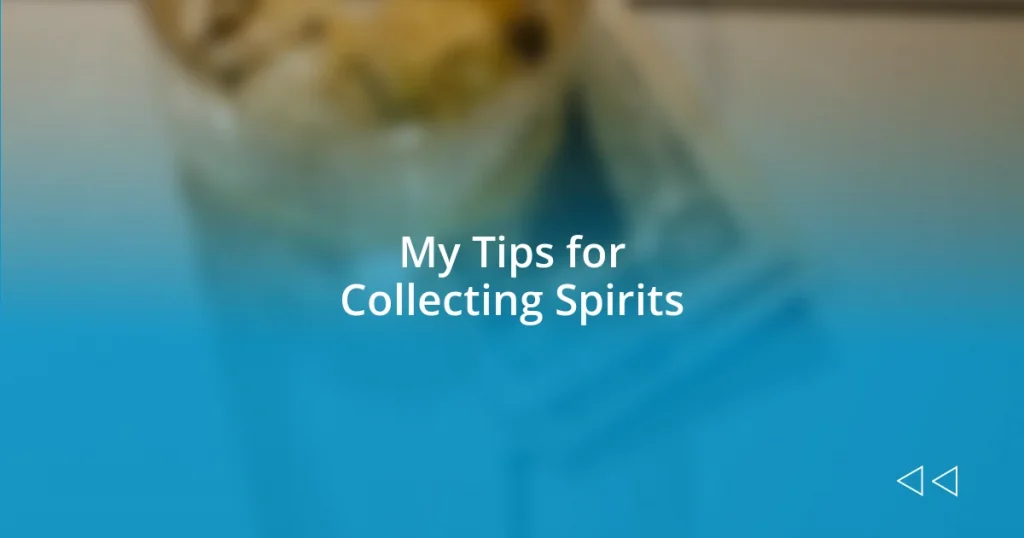Key takeaways:
- Understanding the fundamental types of craft beer, like ales and lagers, enriched the author’s tasting experiences, leading to a broader appreciation of flavors and styles.
- Proper storage and tracking of the beer collection are essential for preserving quality and enhancing enjoyment, allowing for organized tasting and effective inventory management.
- Engaging with breweries that share personal values and participating in communal tasting groups foster a deeper connection to the craft beer community, offering insights and enriching experiences.

Understanding craft beer types
When I first ventured into the world of craft beer, I was overwhelmed by the variety. Did you know there are major categories like ales and lagers? Ales, with their fruity and complex flavors, captured my heart, while lagers often brought a refreshing crispness that felt perfect on a hot day. Each sip seemed to tell a different story, and I soon realized how crucial it was to understand these differences.
As I explored further, I stumbled upon the magic of IPAs (India Pale Ales). I remember the first time I tried a double IPA; the hoppy bitterness struck a chord deep within me. It made me question how a single beer could offer such a wide range of flavor profiles—everything from piney and resinous to floral and citrusy. Have you ever tasted a beer that completely changed your perception of what beer could be? For me, that IPA was a revelation.
Then there are stouts and porters, often rich and decadent, enveloping you like a cozy blanket on a chilly evening. I vividly recall savoring a chocolate stout, which was so lush that it felt more like dessert than a drink. This variety of flavors shows just how vast the world of craft beer is. Each experience invites us to explore further, immersing ourselves in an ever-evolving landscape of taste and culture.

Choosing the right storage
Choosing the right storage for your craft beer collection is pivotal in preserving its rich flavors and aromas. I recall when I first started brewing my collection; I didn’t think much about where to store it. Unfortunately, some of those early purchases fizzled because I kept them in a warm closet. Now, I emphasize climate control to ensure every bottle is enjoyed at its best.
Consider these key factors for optimal storage:
– Temperature: Ideally, keep your beer between 45-55°F (7-13°C) for most styles, as fluctuating temperatures can alter flavors.
– Light: Store your beer in a dark environment; UV light can degrade the quality and lead to skunky flavors.
– Humidity: Maintain a humidity level around 50-70% to prevent corks from drying out if you’re storing bottles with corks.
– Position: Always store bottles upright to minimize contact between the beer and the cap, reducing oxidation.
– Accessibility: Organize your collection so that you can easily reach your favorites; nothing beats that moment when you decide to share a special brew with friends.

Tracking your beer inventory
Tracking your beer inventory may sound tedious, but it is an essential practice for any serious craft beer enthusiast. I remember starting my collection without any system; it quickly became chaotic. One day, I found myself with duplicates of beers I was trying to avoid because I couldn’t recall what I had on hand. That’s when I realized I needed a reliable method to keep track of my inventory.
For me, maintaining an inventory system has transformed how I experience craft beer. I usually prefer simple spreadsheets where I can log each beer’s name, type, and tasting notes. I’ve even started adding fields for purchase dates and serving temperatures, which has helped me appreciate how flavors evolve over time. Have you ever tried a beer a year later and thought it tasted completely different? That’s the beauty of tracking; it allows me to revisit those experiences with a keen eye.
There are several tools out there to assist with tracking, ranging from mobile apps to spreadsheets. To give you a clearer picture, here’s a comparison of a few popular options:
| Tool | Features |
|---|---|
| Beer Inventory Apps | Mobile-friendly, easy tracking, barcode scanning, and sharing features. |
| Excel or Google Sheets | Customizable, allows detailed notes and tracking, no internet required. |
| Specialized Websites | Community features, user reviews, and beer recommendations integrated. |
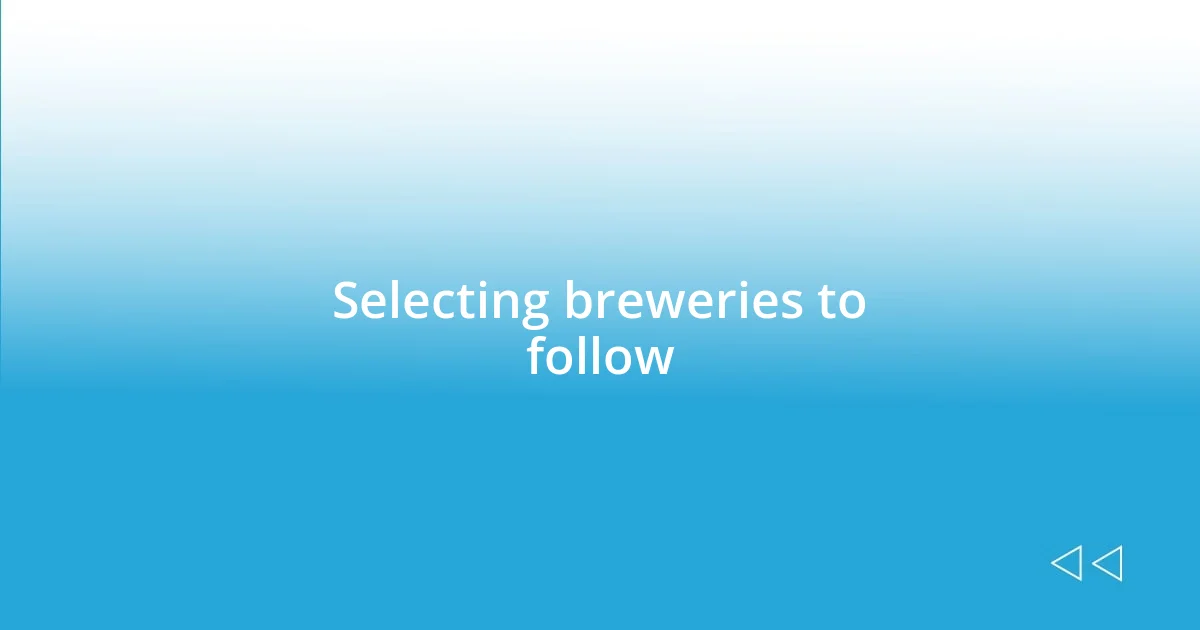
Selecting breweries to follow
When selecting breweries to follow, I’ve found that it’s crucial to choose those that resonate with my taste and ethos. For instance, I remember the excitement of discovering a local brewery that emphasizes sustainability and community engagement. Their dedication to environmentally friendly practices made me feel more connected to each sip of their beer, as if I was supporting something meaningful with my choice. Have you ever tasted a beer that simply felt like it was crafted with love? That’s what I seek in breweries.
Exploring various styles is another vital aspect of my selection process. I often look for breweries that offer a range of flavors, from hoppy IPAs to rich stouts. One memorable experience was stumbling upon a small brewery that specialized in barrel-aged beers. The complexity and depth of their offerings opened my palate to a world of taste I hadn’t explored yet. It’s amazing how each brewery can uniquely contribute to your collection, almost like curating a personalized taste journey.
Lastly, I consider the stories behind the breweries. Every time I come across a new brand, I dig deep into their history and the people behind the beers. A standout moment was learning about a family-run brewery that started during a kitchen experiment. Their passion and perseverance reminded me of the joys of brewing at home. Connecting with the narratives helps me appreciate each bottle even more—don’t you think a good story enhances the experience?

Building a tasting schedule
Building a tasting schedule has been a game changer for me as I dive into the myriad flavors of craft beer. When I first started, my tastings felt a bit random and chaotic. It wasn’t until I began mapping out specific dates, styles, and even food pairings that I truly unlocked the potential of each beer I experienced. Have you ever felt like you were just drinking without really savoring the moment? A structured schedule invites anticipation and appreciation.
I usually dedicate a couple of weekends a month for my tasting events, inviting friends along for the ride. One of my fondest tasting nights involved a “West Coast vs. East Coast” IPA face-off. We meticulously planned the lineup, ensuring each beer had a moment in the spotlight. It was thrilling to see how flavor profiles differ by region, and the conversations flowed as freely as the beer. The thoughtful curation of the event turned a casual gathering into an enriching experience that I still reminisce about.
When building my schedule, I also make room for seasonal beers and special releases. I remember the excitement of coordinating a tasting around a limited-edition stout release. By planning, I could fully savor these unique offerings rather than letting them sit untouched in my collection. Isn’t it wonderful how the right timing can enhance your tasting experience? Embracing this approach has not only made my tastings more enjoyable but has also led to lasting memories that I cherish.
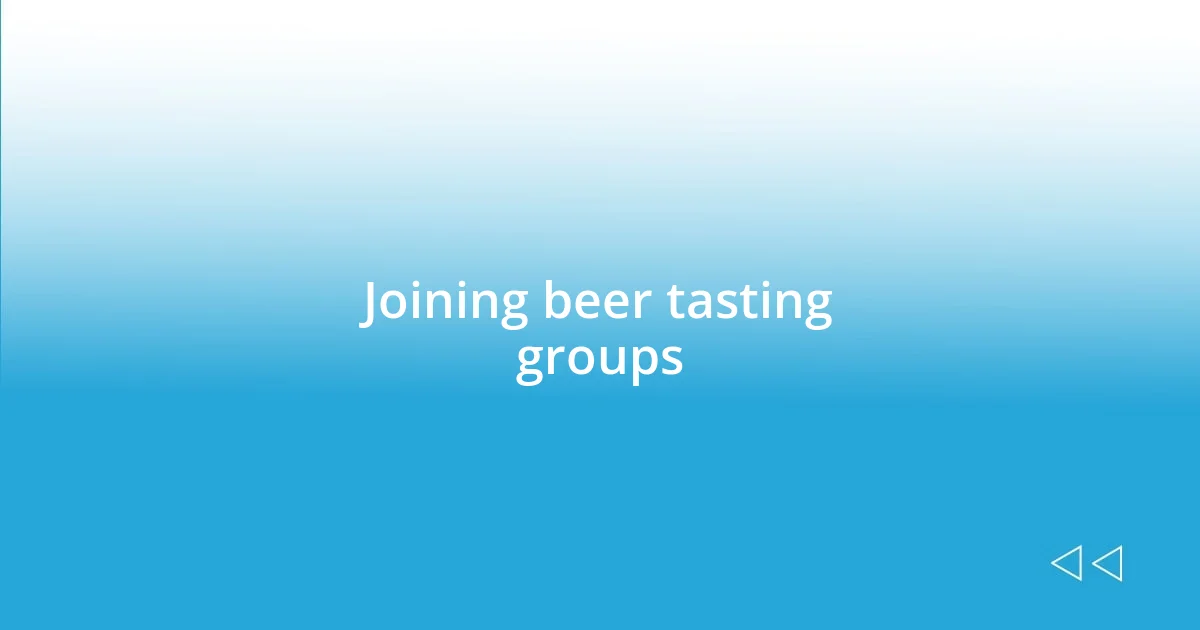
Joining beer tasting groups
Joining beer tasting groups has significantly enriched my craft beer journey. I still remember the first time I attended a local tasting event. The camaraderie among fellow beer enthusiasts was palpable; it felt like stepping into a world of shared passion. Have you ever met a group of people who immediately understood your love for a specific brew? That’s how I felt, and it amplified my appreciation for different styles and flavors.
As I became more involved, I discovered the value of learning from others’ experiences. I once met an industry veteran who introduced me to rare Belgian ales, which I had never considered before. His insights transformed my view of beer, highlighting how diverse and rich the craft brewing scene truly is. Attending these groups isn’t just about tasting; it’s about sharing stories, knowledge, and sometimes even laughs over that unforgettable sour or overly hopped IPA.
One of the most memorable moments in my tasting group was our blind tasting challenge. We each brought a bottle and had to guess the style and origin of each beer. I remember my surprise when I misidentified a familiar local brew as an international one. That experience taught me how perception can shift with context and discussion. Isn’t it fascinating how our taste buds can lead us on unexpected journeys? Joining these groups continues to inspire me and fosters a sense of community I genuinely cherish.

Expanding your collection wisely
Expanding your craft beer collection wisely requires a thoughtful approach to variety and quality. I remember my early days of collecting when I eagerly bought every intriguing label that caught my attention. Over time, I realized that filling my shelves randomly didn’t lead to satisfying tastings. Instead, I learned to focus on specific styles I wanted to explore further. This method not only helped me appreciate different brewing techniques but also created exciting moments when I could compare similar styles side by side.
One of my favorite strategies for smart expansion has been to pay attention to local breweries and special releases. I vividly recall the thrill of stumbling upon a limited seasonal release from a nearby microbrewery. Not only was it a delightful find, but it also connected me to the community. Supporting local breweries while diversifying my collection has turned beer hunting into an adventurous experience. Have you ever felt the thrill of discovering a hidden gem in your neighborhood? Those moments really deepen the connection to the craft beer culture.
When considering new additions, I make it a point to think about future tastings. I remember holding onto a barrel-aged ale for a year, waiting for the perfect moment to share it with friends. The anticipation made the experience all the more enjoyable, and I’ve started to see my collection not just as a stash of bottles, but as a vault of shared experiences waiting to happen. Isn’t it wonderful to have a collection that tells a story? Thoughtful expansion not only enhances your selection but also enriches your tasting experiences.





